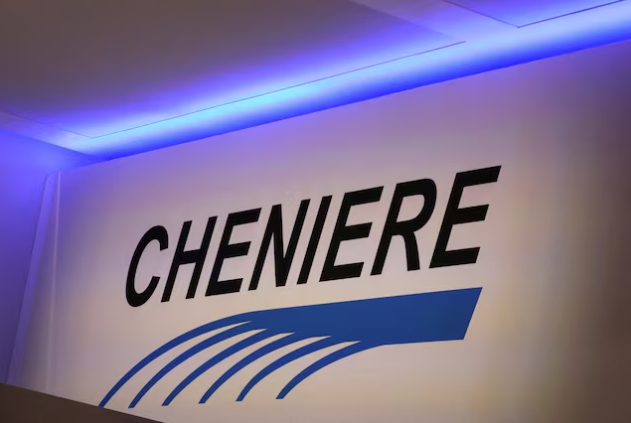
The logo of Houston-based liquefied natural gas company Cheniere seen during the LNG 2023 energy trade show in Vancouver, British Columbia, Canada, July 12, 2023.
Key contributors to the lower export volumes were maintenance activities at Cheniere Energy's Sabine Pass plant in Louisiana (capacity: 4.5 billion cubic feet per day) and its Corpus Christi facility in Texas (2.4 bcfd). Cameron LNG's 2.0 bcfd facility in Louisiana was also undergoing maintenance, while Freeport LNG's 2.1 bcfd plant in Texas experienced unplanned unit outages. By the final week of June, operations at Sabine Pass and Cameron had mostly resumed, with both plants producing near capacity.
Despite a price premium in Asia, Europe remained the primary destination for U.S. LNG. In June, 5.53 MT or 66% of U.S. LNG exports went to Europe, slightly lower than May's 6.05 MT or 68%. Shipments to Asia accounted for 1.56 MT or 19% of total exports in June, down from 1.88 MT or 21% the previous month. The Asian spot benchmark, the Japan Korea Marker, rose to $12.90 per mmBtu in June from $11.83 in May, while Europe's Title Transfer Facility benchmark increased to $12.38 per mmBtu from $11.68.
LNG imports in Asia have been affected by slower economic growth, with the region importing 16 MT less in the first half of 2025 compared to the same period in 2024.
Latin America saw increased imports from the U.S. due to colder weather and domestic supply challenges. U.S. exports to the region rose to 0.81 MT or 10% of total LNG shipments in June, up from 0.66 MT or just over 7% in May. Argentina alone purchased 340,000 tons of LNG, with the U.S. supplying around one-third and Trinidad and Tobago delivering 230,000 tons.
U.S. LNG cargoes also reached markets such as Egypt and South Africa in June. Additionally, several long-term agreements were announced between U.S. LNG developers and buyers in Asia. These deals may lead to further increases in export volumes over the next five years, reinforcing the United States' position as the leading global exporter of LNG.
Meanwhile, LNG Canada’s Train 1, with a capacity of 14 mtpa, exported its first shipment on the last day of June. Its strategic location is expected to offer shorter shipping times to Asia, potentially increasing competition for U.S. LNG exports from the Gulf Coast.
Shell issued a statement denying reports of ongoing discussions with BP regarding a potential acquisition.